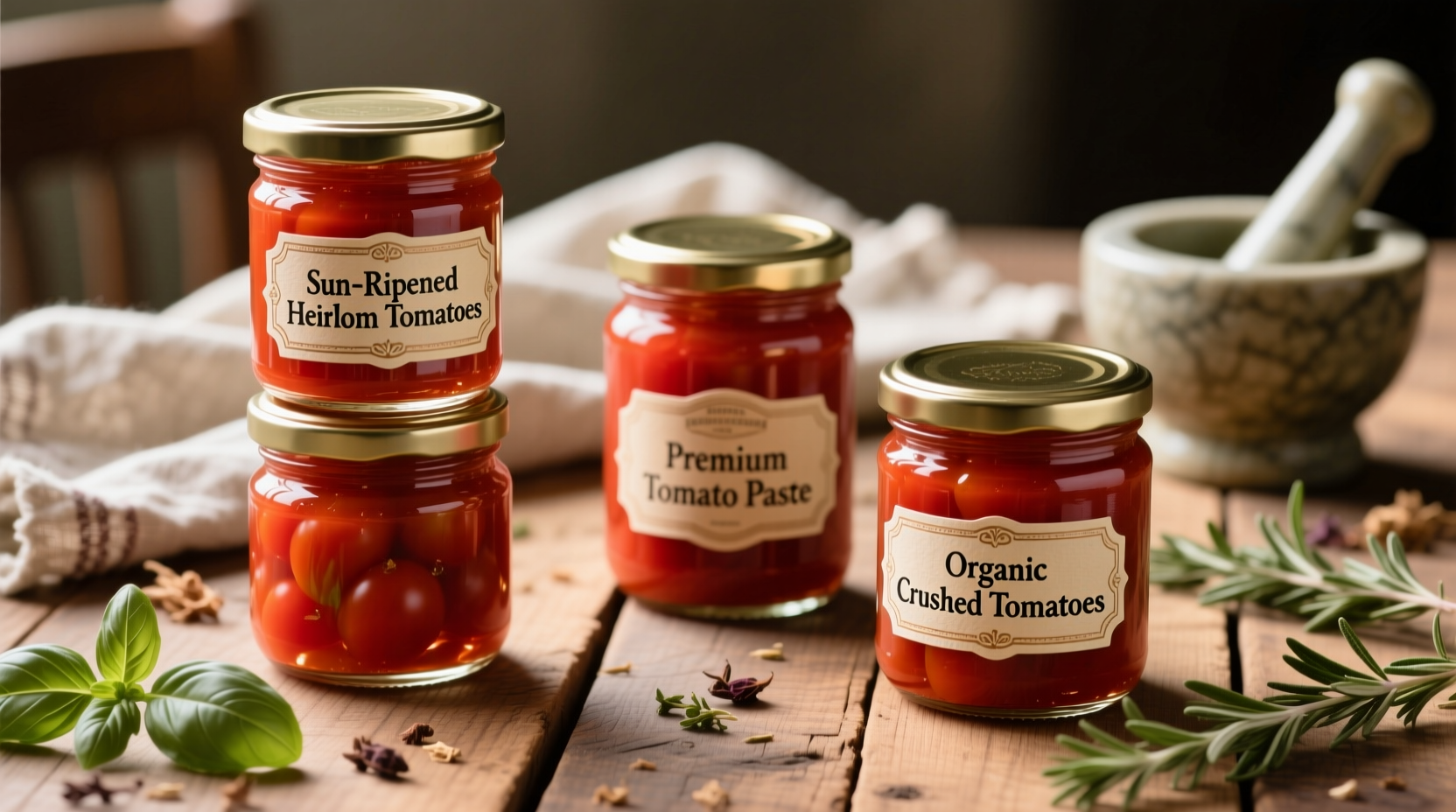When you see "Tomato GG" on a product label, you're looking at a quality indicator that matters more than most home cooks realize. This designation—most commonly standing for Gourmet Grade—identifies tomato products made from carefully selected, ripe tomatoes processed with minimal intervention to preserve natural flavor and texture. Unlike standard canned tomatoes that often contain calcium chloride or other firming agents, GG-certified products deliver the authentic taste and consistency professional chefs rely on for sauces, stews, and braises.
Decoding Tomato Product Labels: Beyond the GG Mark
Understanding what appears on tomato product labels helps you make informed choices in the grocery aisle. While "GG" has become shorthand for quality in culinary circles, the labeling landscape includes several important designations:
| Label Designation | Meaning | Best Culinary Uses |
|---|---|---|
| Gourmet Grade (GG) | Tomatoes processed at peak ripeness with minimal additives | Raw sauces, pizza, dishes where fresh tomato flavor is essential |
| Whole Peeled | Tomatoes preserved in juice or puree with citric acid | Chunky sauces, soups, stews requiring texture |
| Crushed | Mixture of diced tomatoes and tomato juice | Hearty pasta sauces, chili, robust dishes |
| Passata | Smooth, uncooked tomato puree without seeds or skin | Delicate sauces, finishing touches, dishes requiring smooth texture |
The Evolution of Tomato Product Standards
Tomato processing standards have evolved significantly since commercial canning began in the 19th century. Understanding this timeline helps explain why designations like GG matter today:
- 1890s-1920s: Early canned tomatoes focused on preservation over quality, often resulting in mushy texture and metallic taste
- 1930s-1950s: Introduction of calcium chloride to maintain firmness, but at the cost of natural flavor
- 1960s-1980s: Rise of "premium" designations as consumer awareness of food quality increased
- 1990s-2000s: Development of specific grading systems like Gourmet Grade by culinary professionals
- 2010s-Present: Third-party certification of tomato quality standards with transparent sourcing information
According to the USDA Food Safety and Inspection Service, modern tomato grading standards now include specific requirements for Brix levels (sugar content), consistency, and processing methods that directly impact culinary results.
When Tomato Grade Really Matters
Not every recipe demands Gourmet Grade tomatoes. Understanding context boundaries helps you use your budget wisely:
Situations Where GG Makes a Noticeable Difference
- Raw tomato sauces that won't be cooked for extended periods
- Pizza sauce where tomato flavor shines through minimal toppings
- Dishes featuring tomatoes as the primary ingredient
- Recipes requiring natural tomato sweetness without added sugar
Situations Where Standard Quality Suffices
- Hearty stews cooked for hours where tomato identity blends with other ingredients
- Recipes with strong competing flavors (spicy arrabbiata, rich meat sauces)
- Dishes requiring significant additional seasoning that will mask tomato nuances
- Applications where texture matters more than fresh flavor (thickening agents)

Practical Guide to Selecting and Using Tomato Products
Follow these evidence-based recommendations to maximize your tomato product investment:
Reading Labels Like a Pro
Look beyond the "GG" designation to verify quality:
- Ingredient list: Should contain only tomatoes and possibly citric acid or calcium chloride in minimal amounts
- Brix level: 4-6° Brix indicates balanced sweetness for most applications
- Harvest date: Products with recent harvest dates deliver superior flavor
- Acidity level: Between 3.8-4.2 pH for optimal flavor balance
Substitution Guide for Common Tomato Products
When you don't have the exact product called for in a recipe:
- GG crushed tomatoes → Pulse whole peeled tomatoes briefly in food processor
- GG diced tomatoes → Cut whole peeled tomatoes by hand for better texture control
- Passata → Blend and strain whole peeled tomatoes through fine mesh sieve
- Tomato paste → Simmer crushed tomatoes uncovered until reduced by 75%
Storage and Shelf Life Considerations
Proper storage preserves the quality advantages of Gourmet Grade products:
- Unopened GG products maintain peak quality for 18-24 months in cool, dark pantries
- Once opened, transfer to glass containers and refrigerate for up to 5 days
- For longer storage, freeze GG tomato products in ice cube trays then transfer to freezer bags
- Always check for bulging lids or off-odors before using any canned product
Avoiding Common Tomato Product Misconceptions
Several persistent myths about tomato products lead to suboptimal cooking results:
- "San Marzano means superior quality": While San Marzano tomatoes have DOP certification in Italy, many "San Marzano-style" products sold elsewhere don't meet the same standards. Look for the official DOP seal for authentic San Marzano tomatoes.
- "All canned tomatoes are the same": Processing methods significantly impact flavor compounds. A 2022 study published in the Journal of Food Chemistry found that minimally processed tomatoes retained 32% more lycopene and volatile flavor compounds.
- "Higher price always means better quality": Some premium brands add unnecessary ingredients. Always check the ingredient list rather than relying solely on price or marketing claims.
Putting Tomato GG Knowledge Into Practice
Now that you understand what Tomato GG represents, here's how to apply this knowledge immediately:
- Examine your pantry's tomato products using the grading criteria outlined
- For your next sauce recipe, select GG products when tomato flavor should shine
- Conduct a side-by-side taste test of GG versus standard products in a simple tomato basil sauce
- Adjust your cooking technique—GG products often require less reduction time due to superior natural consistency
Remember that the best tomato product depends on your specific recipe requirements rather than a universal "best" option. Understanding labeling systems like GG empowers you to make informed choices that elevate your cooking without unnecessary expense.











 浙公网安备
33010002000092号
浙公网安备
33010002000092号 浙B2-20120091-4
浙B2-20120091-4